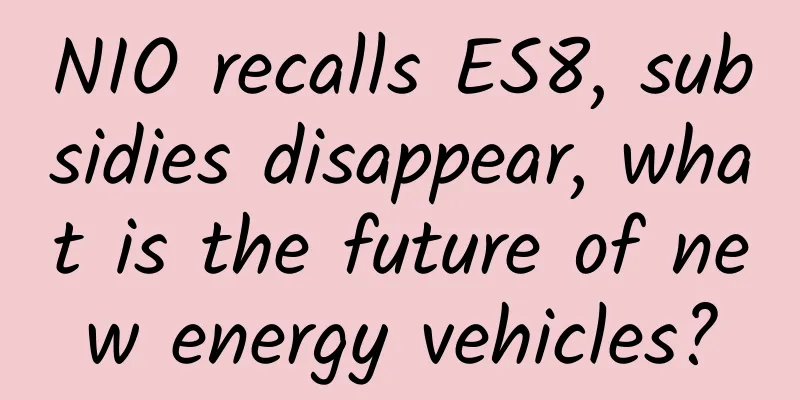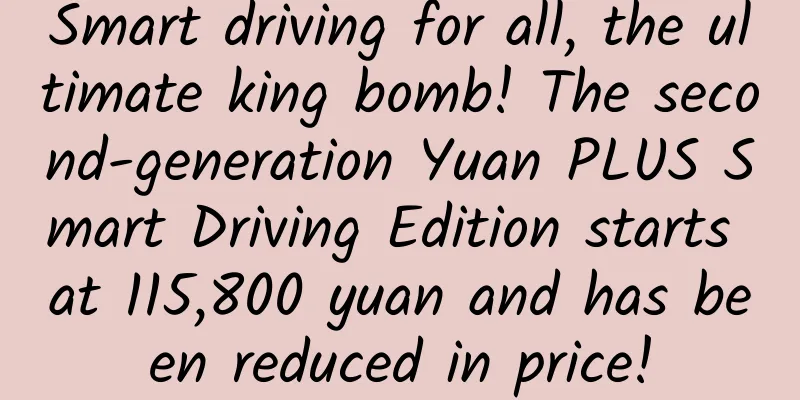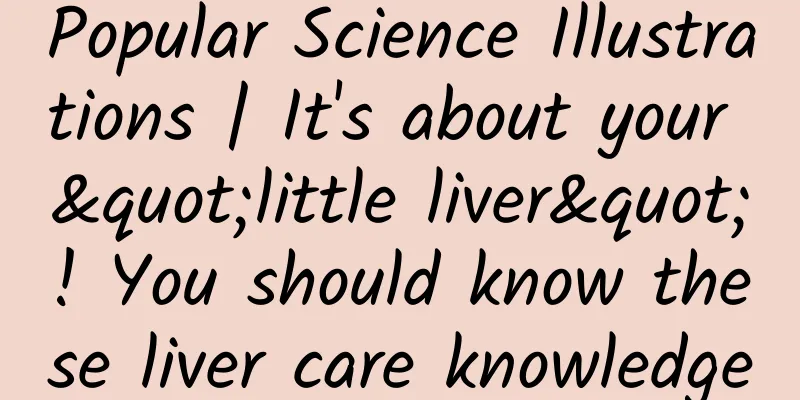NIO recalls ES8, subsidies disappear, what is the future of new energy vehicles?

|
After several spontaneous combustion incidents, NIO finally faced the problem and announced a recall plan. More importantly, NIO also became the first manufacturer in the new energy market to announce a recall plan. Previously, NIO filed a recall plan with the State Administration for Market Regulation in accordance with the requirements of the Regulations on the Management of Recall of Defective Automobile Products and the Implementation Measures for the Regulations on the Management of Recall of Defective Automobile Products. It was determined that from June 27, 2019, a total of 4,803 NIO ES8 electric vehicles equipped with power battery packs produced between April 2, 2018 and October 19, 2018 would be recalled. According to official data from NIO, as of May 2019, a total of 17,550 NIO ES8 electric vehicles have been delivered. This recall involves nearly 1/4 of the vehicles, which is a very large scope. As the first manufacturer in the new energy market to announce a recall plan, NIO is not only to blame, but also casts a gray shadow on the fate of new energy electric vehicles. Weilai's Battery Rashomon On June 27, after announcing the recall plan, NIO issued a statement saying, "The battery pack used in the accident vehicle is equipped with a module with specification model NEV-P50. There is a possibility that the voltage sampling harness in the module is trapped by the cover due to improper routing. In extreme cases, the insulating material on the surface of the squeezed voltage sampling harness may rub and cause a short circuit." Simply put, according to NIO, the problem with ES8 is due to a problem with the module, and the NEV-P5 module is provided by CATL. In short, this is all CATL's problem. Subsequently, Contemporary Amperex Technology Co., Ltd. (CATL) also issued an announcement explaining that "the battery pack case recalled this time interferes with the module structure supplied by our company, and there may be a risk of short circuit in the low-voltage sampling harness under certain extreme conditions." In layman's terms, CATL believes that this is a problem with the car's design and that there is nothing wrong with the NEV-P50 module. Before the repairs even started, the manufacturer and the supply chain were shirking responsibility, and a Rashomon was staged... However, let's think back. There can only be two reasons for the problem with ES8. One is NIO's problem, and the other is CATL's problem. If it is a problem with NIO, then it is not a big deal, since the car has already been recalled and there is no need to worry about further accidents. But if it is a problem with CATL, then it will affect countless electric vehicles. According to the financial report of CATL, the sales volume of power battery systems of CATL reached 21.18GWh in 2018, making it the largest power battery manufacturer in the world in terms of shipments. As of the end of 2018, the effective catalog of new energy vehicle models announced by the Ministry of Industry and Information Technology totaled more than 3,800 models, of which more than 1,100 models were equipped with power batteries from CATL, accounting for about 29%. Although considering NIO’s previous public relations style, we have reason to believe that this accident only affected the ES8 electric car, but from the small details, we can see the big picture. Details such as supply chain, revenue, and cruising range are indeed issues that new energy vehicles cannot avoid. New car-making forces are moving forward with heavy burdens If we consider the long-term, new energy + driverless is definitely the future of the automotive industry. Israeli historian Yuval Noah Harari once described the form of future cars in "A Brief History of Tomorrow": Due to the popularity of autonomous driving, there will be no concept of private cars in the future. At the same time, due to the depletion of oil energy, the characteristics of future energy will be clean and efficient. Although the general direction is correct, current new energy manufacturers have not gained any confidence from it. For example, if you knew that the general trend of history was "democracy and republic" when Qin Shihuang unified China and established a centralized monarchy in 221 BC, I believe you would not be comforted at all for betting on the right trend of the times. Take NIO as an example. According to the financial report, in the first quarter of 2019, NIO's total revenue was 1.6312 billion yuan, a decrease of 54.6% from the previous quarter; the net loss was 2.6236 billion yuan, a decrease of 25.1% from the previous quarter and an increase of 71.4% from the previous year. Correspondingly, the delivery volume of NIO's ES8 in the quarter also halved from the previous quarter to only 3,989 units. Converted into losses, for every ES8 sold in the first quarter of 2019, it will lose 650,000 yuan in the future. If NIO wants to reduce its losses at this stage, it can only choose to charge for services, such as battery replacement services and battery delivery services. However, in this way, the advantage of "electric cars saving money" will be lost for consumers. As the saying goes, success or failure is due to Xiao He. The biggest advantage of electric vehicles is that they are battery-powered, but batteries also bring problems such as range anxiety and flammability. Taking Tesla as an example, the Model 3 standard range upgrade version is priced at 328,000 yuan, and its range is only 460km. The 2019 Camry of the same price uses hybrid technology and can theoretically run 1,250km on a full tank of fuel. In terms of charging, even if Tesla's super charging station can reach a charging speed of 120kW, it still takes at least 1 hour to fully charge. Compared with fuel vehicles that can be "fully charged" in a few minutes, the charging speed of electric vehicles can be described as a snail's pace. Although NIO has brought us another solution - improving charging efficiency through battery swap stations, we have to consider the issue of NIO's ES8 recall at the beginning of the article. If problems arise with batteries from different batches, and these batteries are mixed up through battery swaps, it would be like installing a time bomb on the consumer's car. In general, although the current new energy vehicles have a clear evolutionary goal, they are limited by technology and environment and do not have the evolutionary capabilities to match it. Problems after subsidies disappear Just one day before NIO recalled ES8, the new policy on subsidies for new energy vehicles in 2019 was officially implemented, which clearly stated that local subsidies would be cancelled and national subsidies would be reduced by more than 50%. This was like a bolt from the blue for the "toddler" new energy vehicle companies. For a long time, many car companies have launched "customized" cars in response to subsidies. For example, the Ora R1 is aimed at the 300-399km range. In 2018, this car could receive a subsidy of 45,000 yuan, but after the implementation of the new policy on subsidies for new energy vehicles in 2019, the subsidy for the Ora R1 was only 18,000 yuan. Even with huge subsidies before, new car companies still failed to make up for their losses. After the subsidies were reduced, these car companies could only seek to increase prices. Taking Xiaopeng G3 as an example, the unified selling price after subsidies in 2018 was 135,800-165,800 yuan. In February 2019, the price of Xiaopeng G3 increased to 155,800-199,800 yuan, a range of 20,000-34,000 yuan. Some analysts said that the reduction in subsidies will put great pressure on manufacturers, especially those that receive subsidies. In the future, car companies can only achieve profitability through competition. From this perspective, a reduction in subsidies may not be a bad thing. It is like a baby learning to walk. If you don't let go completely and allow the baby to fall a few times, then he may never learn to walk. However, the reduction in subsidies does not mean that the country will no longer cultivate new energy forces, but rather change direction and use the funds in areas such as infrastructure construction such as charging stations and supporting operation services. In other words, the country has changed its focus from to car companies to to consumers, focusing on cultivating consumers' consumption habits and paving the way for new energy car companies. In short, the market now offers new energy vehicle companies only two options: to collapse or to upgrade their technology. As for consumers, the market will eventually "eliminate the false and retain the true", leaving behind truly valuable products. As a winner of Toutiao's Qingyun Plan and Baijiahao's Bai+ Plan, the 2019 Baidu Digital Author of the Year, the Baijiahao's Most Popular Author in the Technology Field, the 2019 Sogou Technology and Culture Author, and the 2021 Baijiahao Quarterly Influential Creator, he has won many awards, including the 2013 Sohu Best Industry Media Person, the 2015 China New Media Entrepreneurship Competition Beijing Third Place, the 2015 Guangmang Experience Award, the 2015 China New Media Entrepreneurship Competition Finals Third Place, and the 2018 Baidu Dynamic Annual Powerful Celebrity. |
>>: Tesla will announce Q2 delivery volume, market expects 80,000 to 90,000 vehicles
Recommend
This generation of young people rely on "sound massage" to help them sleep
Difficulty falling asleep, shallow sleep, dreamin...
Yin Chen's new course "2022 Algorithm Disassembly and Gameplay Analysis" Qianchuan Launches 100 Questions Practical Disassembly
Introduction to the video tutorial lecture of the...
A guide to live streaming marketing techniques!
Live broadcast script is a key factor affecting t...
[2016 latest edition] A complete list of professional terms in the mobile Internet industry!
Mobile Internet Professional Level 4 Exam is here...
Why can't you create a knowledge carnival in the Himalayas?
For the platform, creating a nominal "festiv...
A passenger saw an "alien" sitting next to him on a plane and exclaimed: What the hell is this?
The story begins on an ordinary flight. A passeng...
"Honor of Kings" mobile game product analysis report: The rise of Honor of Kings, victory or defeat is so simple!
1. Document Overview and Analysis Purpose Experie...
How can technicians get rid of the anxiety in the era of transplanting everything?
2016 is the year when mobile Internet and hardwar...
When did human ancestors begin to domesticate dogs?
Cats and dogs are common pets in modern families ...
Can children get a glimpse of their future height? X-ray, MRI, ultrasound, which one should be chosen for bone age assessment?
Recommended academic articles related to this pop...
The plant that “can make you immortal if eaten” is actually everywhere on the ground?
Plant names are all kinds of strange and come fro...
GAC will mass-produce the world's first electric car with a range of 1,000 kilometers, which can run 900 kilometers with air conditioning
On July 11, GAC Group officially announced that t...
The "Song of the 24 Solar Terms" actually has eight lines, and you may not have sung all of them.
The beginning of winter has just passed, which me...
Online Promotion: How to plan a successful event?
How is a complete event planned and implemented? ...









